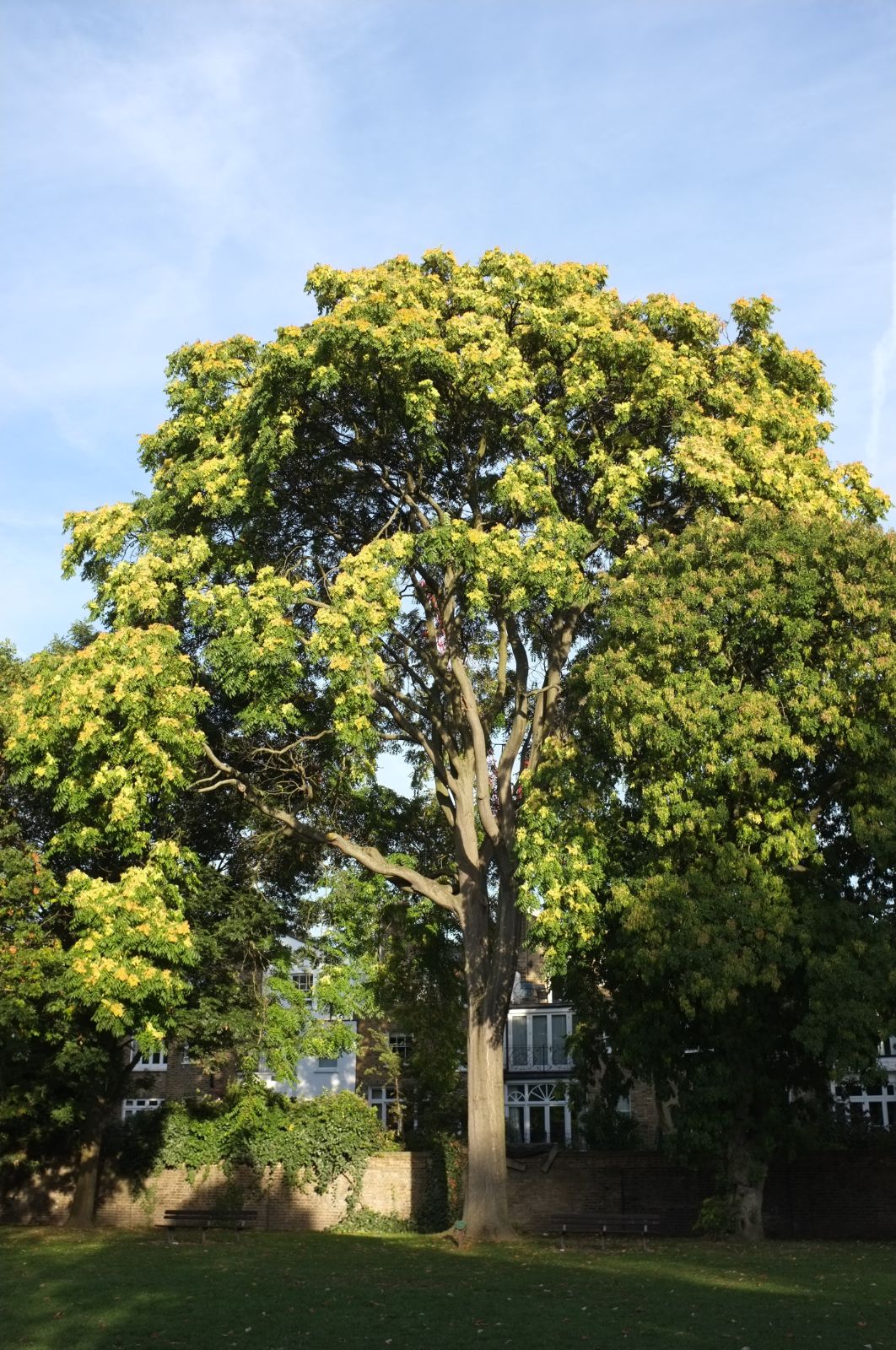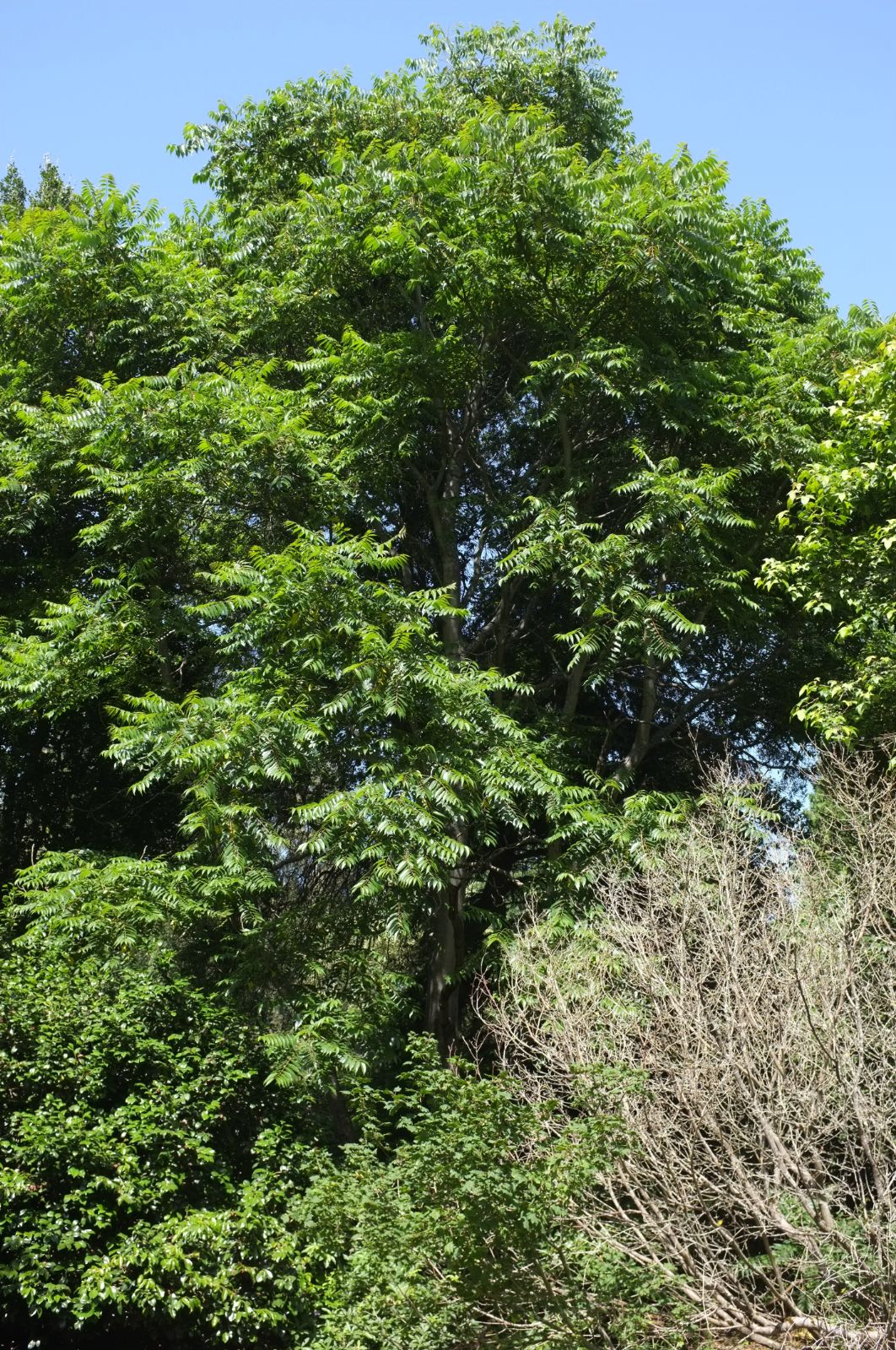Ailanthus
Credits
Article from Bean's Trees and Shrubs Hardy in the British Isles
Article from New Trees by John Grimshaw & Ross Bayton
Recommended citation
'Ailanthus' from the website Trees and Shrubs Online (treesandshrubsonline.
Family
- Simaroubaceae
Common Names
- Trees of Heaven
There are about five species of Ailanthus, distributed from central Asia to Australia, though one (A. altissima) is widely naturalised outside this area. Ailanthus species are large, deciduous or evergreen trees, often emitting a strong smell from the leaves and staminate flowers. The leaves are alternate, imparipinnate and crowded at the tips of the branches; they can grow to over a metre in length. The leaflets are more or less opposite, with glands on the undersides. Ailanthus is primarily dioecious, though some hermaphrodite flowers usually occur; the flowers are borne in terminal or axillary panicles and are rather small. Each staminate flower has five (to six) sepals, five (to six) greenish yellow petals, and 10(–12) stamens, which are inserted at the base of a 10-lobed nectar disc. The fruit is a samara with a single seed in the centre of an elliptic wing; these occur in clusters of two to five within the larger fruiting panicle (Brizicky 1962, Li 1993, Harden 2002).
Ailanthus like a rich, well-drained soil but will tolerate much poorer sites. As well as sowing themselves (too freely), they will also sprout from suckers at some distance from the base of the trunk. Seed or root cuttings are the usual methods of propagation.
Bean’s Trees and Shrubs
Ailanthus
A group of tall trees with alternate, pinnate leaves, found in temperate and tropical Asia. The flowers have no beauty, but the samaroid fruits are often richly coloured, and add much to the attractiveness of trees already very attractive in their fine, handsomely divided foliage. The species in cultivation thrive best in a rich, deep soil, and can be propagated by suckers from the root, by root-cuttings, and by grafting.


